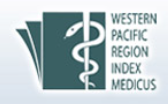Abstract:
Objective To investigate the relationships among psychological resilience, parental control, and behavioral problems in middle school students, aiming to provide evidence-based recommendations for the prevention and intervention of behavioral issues in middle school students, as well as for the development of related policies. Methods A stratified cluster sampling method was used to select 2 745 participants from three cities in Guizhou Province with different levels of economic development from August to December 2021. The Child Behavior Checklist (CBCL), Parental Control Questionnaire, and Psychological Resilience Questionnaire were administered to junior high school students and their parents. A network analysis method was employed to construct a network analysis model of factors influencing behavioral problems. Results The detection rate of behavioral problems among junior high school students in Guizhou Province was 22.62%. The scores for psychological resilience (goal focus, emotional control, positive cognition, family support, and interpersonal assistance) and proactive inquiry in behavior control were higher in the group without behavioral problems than in the group with behavioral problems. Scores for psychological control (inducing guilt, with drawing affection, and asserting authority) were higher in the group with behavioral problems than in the group without behavioral problems, with statistically significant differences (t=9.80, 17.76, 6.21, 12.20, 13.18, 6.28, 11.58, 11.10, 10.74, P < 0.05). The network model showed that among the same variable factors, the strongest connection weight was between inducing guilt and withdrawing affection, with a weight of 0.79. Between different variables, there were negative correlation between behavioral problems and psychological resilience (goal focus, emotional control, positive cognition, family support, interpersonal assistance) and behavior control (proactive inquiry, behavioral restraint) with correlation coefficients (r=-0.25, -0.42, -0.16, -0.31, -0.33, -0.17, -0.03, P < 0.05), respectively. There were positive correlation between psychological control factors (inducing guilt, withdrawing affection, and asserting authority) and behavioral problems (r=0.29, 0.27, 0.27), and a negative correlation between these psychological control factors and psychological resilience factors (goal focus, emotional control, positive cognition, family support, interpersonal assistance)(r=-0.53--0.13)(P < 0.05). The strongest connection weight was between withdrawing affection and family support, with a connection weight of -0.53. Family support was an important bridge symptom connecting the entire behavioral problem network model, with a high centrality. Conclusions The detection rate of behavioral problems among junior high school students in Guizhou Province is relatively high. Assisting adolescents in establishing a supportive family environment facilitates the cultivation of their psychological resilience, thereby mitigating the occurrence of behavioral problems.











